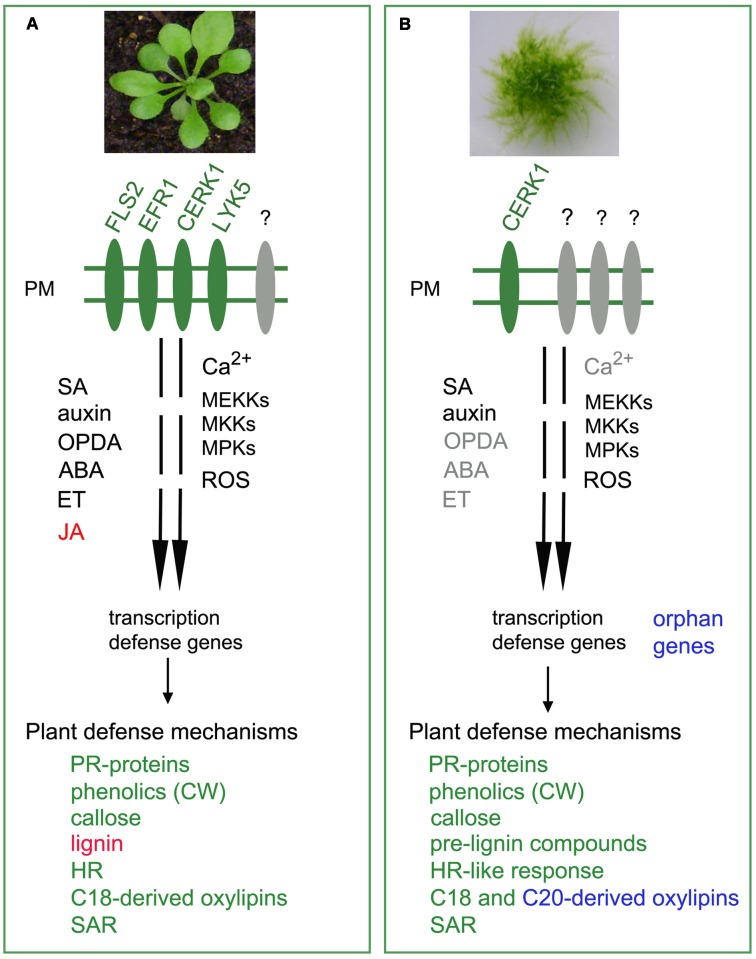FIGURE 2.
Activation of defense responses in Arabidopsis and P. patens. (A) Angiosperms like Arabidopsis thaliana sense the presence of pathogen-associated molecular patterns (PAMPs) by plasma membrane (PM) pattern recognition receptors (PRRs), such as FLS2, EFR1, CERK1, and LYK5 (Couto and Zipfel, 2016). Pathogen recognition triggers calcium (Ca2+) production and activates a MAPK cascade (Seybold et al., 2014). MAP kinase kinase kinases (MEKKs), MAP kinase kinase (MKKs), and MAP kinase (MPKs) are subsequently activated, leading to production of reactive oxygen species (ROS), and expression of defense genes (Meng and Zhang, 2013). The hormones salicylic acid (SA), jasmonic acid (JA) and its precursor cis-oxophytodienoic acid (OPDA), abscisic acid (ABA), auxins, and ethylene (ET) activate the expression of defense genes leading to the activation of defense mechanisms that involves pathogenesis-related (PR) proteins, incorporation of phenolics into the cell wall (CW), deposition of callose and lignin, activation of an hypersensitive response (HR) and systemic acquired resistance (SAR) (Glazebrook, 2005). In response to pathogen infection, oxylipins derived mainly from linoleic acid (18:2) and linolenic acid (18:3; C18 fatty acids) are synthesized (Ponce de León et al., 2015). (B) P. patens lacks close homologs of the receptors FLS2 and EFR, while a functional CERK1 receptor perceives fungal chitin and bacterial peptidyl glycan (Bressendorff et al., 2016). At least one MEKK, one MKK, and two MPKs (MPK4a and MPK4b) participate in P. patens defense responses to fungal chitin (Bressendorff et al., 2016). ROS, SA, and auxin activate expression of defense genes, while JA is not produced (Ponce de León and Montesano, 2013; Reboledo et al., 2015). Further studies are needed to reveal the role of OPDA, ABA and ethylene (names in gray) in moss resistance against pathogens. After pathogen assault, P. patens activates several defense mechanisms, including the expression of genes encoding PR proteins, incorporation of phenolics into the CW, callose deposition and accumulation of pre-lignin compounds (Ponce de León and Montesano, 2013; Overdijk et al., 2016). An HR-like response and SAR are also activated in infected mosses, and oxylipins derived from C18 and polyunsaturated C20 fatty acids are synthesized producing a broader range of oxylipins with possible roles in plant defense (Ponce de León et al., 2012, 2015; Winter et al., 2014). Orphan genes, some of them acquired by gene horizontal transfer from fungi and other microorganisms, could also play a role in moss defense against pathogens. Names in red or blue indicate their presence only in traqueophytes or P. patens, respectively.

